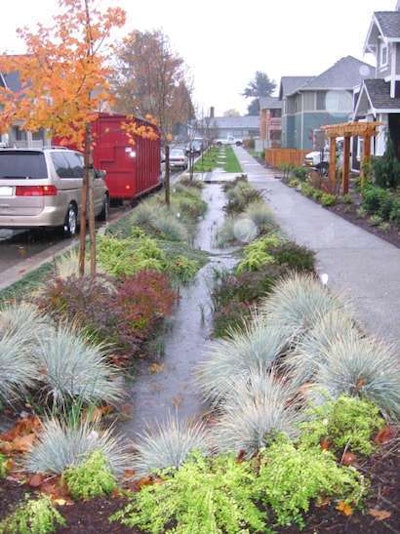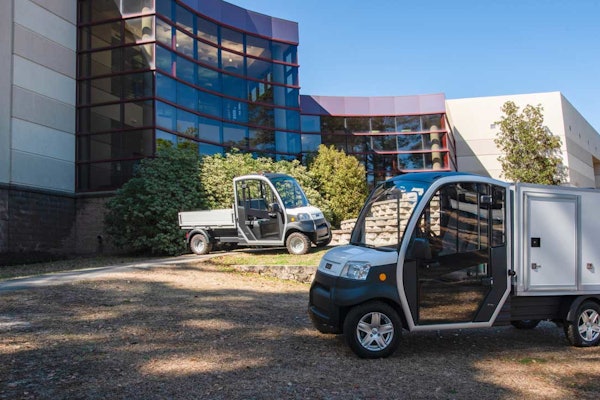
This title is so appropriate for this space due to the various forms of torture plants must endure including, but not limited to foot traffic, compacted soil, dog waste, road salt and more.
While this area is definitely more of a challenge to maintain it doesn’t mean that all hope is lost when it comes to creating a beautiful hellstrip garden.
Why does it matter?
Depending on city ordinances, this may technically be a public space, yet these strips shouldn’t be forsaken or considered the government’s problem.
Though they take up minimal space, these pieces of land can affect first impressions, property values, and the appeal of the neighborhood in general. Having green spaces can help provide wildlife habitats and filter runoff. If your customer is wanting to spruce up this area, below are some steps to take and design options available.
Design options
Depending on your client’s location, this curb area may be city property, so it is important to first check with local ordinances what you are allowed to plant or change. Many cities and towns have changed their laws to encourage the planting and care of these areas. Even if the space is not controlled by a local authority, a homeowner’s association can still have a say as to what can be added.
As a general rule of thumb, ground layer plants should be under two feet tall and mature street tree heights should not interfere with overhead wires.
 Photo: Clarion Associates/Flickr
Photo: Clarion Associates/FlickrAfter this, it will be important to determine the level of soil compaction you are dealing with and the other conditions plants will be facing such as sun and wind exposure. Difficulty irrigating these hellstrips can be overcome with drip irrigation or, if irrigation is not allowed, drought-tolerant plant varieties.
For hellstrips that are next to on-street parking, ease the burden of foot traffic by creating a narrow brick or cobblestone path from the street to the sidewalk without stepping on the plants. Also choosing plants with soft foliage will keep people’s cars from being scratched.
To keep pets from “fertilizing” these spaces, use low barrier shrubs, prickly plants, or an edging material that is high enough to discourage people and animals from stepping in the bed.
Another design option is to turn the space into a rain garden that can capture rainwater and filter it. Plants like tickseed, Joe-pye weed, and golden alexander are all species that do well in this sort of setting.
A rain garden in a hellstrip is particularly ideal if the bed is below the grade of the surrounding area.
Plant possibilities
When selecting the plants to grow in a hellstrip, they need to obviously be able to face numerous stressors, but they also need to be attractive and colorful to create a warm welcome.
 Photo: Juhan Sonin/Flickr
Photo: Juhan Sonin/FlickrAvoid vines or groundcovers that will need constant trimming as they try to expand past their borders. Strive to use inexpensive or easily replaced plants as the city can still end up coming in and needing to do work in that area.
For sunny and dry hellstrips, perennials like blazing star, black-eyed coneflower, false indigo, bellflower do well and groundcovers such as rock phlox and bearberry can work as they grow less than 6 inches tall.
When working with shady hellstrip sites, it’s important to mimic woodland soils. Hechera, columbine, lady fern, and hay-scented fern can tolerate these conditions.
As for trees that can survive these unforgiving strips, if you are not having to work under utility wires, elm, pine, American sycamore, and red maple are all options. Shorter trees that can stay below utility lines include redbud and hawthorn.
Last but not least, there is always the option of growing tradition turfgrass, which can be well suited for certain situations and locations.









